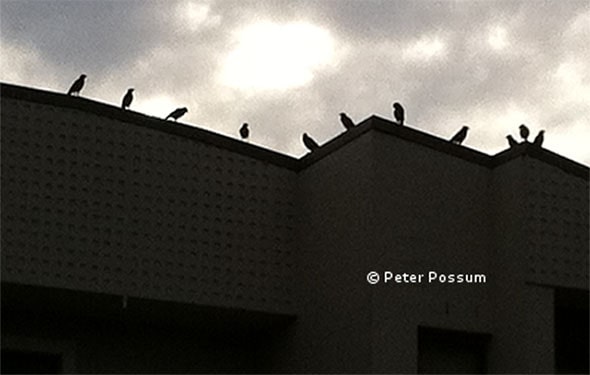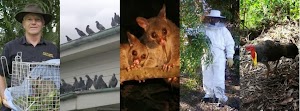Indian Myna birds, with their chocolate brown feathers, yellow beak and bright eyes, are one of the most rapidly increasing feral bird populations in Brisbane. They have been declared the second greatest threat to Australian native birds after land clearing.
Here are a few facts about Indian Mynah Birds.

Indian Myna Birds
How did Indian Mynah birds get to Australia?
Indian Mynah birds (Acridotheres tristis) is native to Asia. They are quite different from the Australian Noisy Miner bird (Manorina melanocephala) which is predominantly grey with a bright yellow eye patch.
In the 1880s, Australia was in the grip of a massive locust plague, and Indian Mynah birds were brought in to control the locusts in Melbourne’s market gardens. It was later introduced to Queensland to control cane beetles and grasshoppers. Unfortunately, not only did they not stop the locusts and other bugs, but like many introductions to Australia, they went on to become pests in their own right.
Do mynah birds kill other birds?
Most of the time Indian Mynas are relatively peaceful gregarious birds. The problem comes when they breed. Indian Mynas will aggressively take over trees and other nesting areas for their young, expelling or even killing other species in the process. They have also been known to displace small gliders as well as large possums in their aggressive quest for the perfect nest for their young.
What is the lifespan of Indian Myna birds?
Indian Mynahs live for an average of 4 years in the wild, but some have been known to reach up to 12 years.
What do Indian Mynah birds eat?
Indian Mynahs are omnivorous which means they eat a wide range of foods, including insects, fruits, seeds, vegetables, scraps, other species fledglings. They are a particular problem in areas with ripening tropical fruit crops.
How do you get rid of Indian Myna Birds?
To get rid of Indian Mynah birds on your property:
- Arrange for us to provide a free quote to remove the nests from the roof and secure any entry points to prevent nesting in your home.
- Remove all food sources including bird seed and pet food from around the outside of the home.
Ask about community groups in Brisbane that are facilitating trapping programs.







